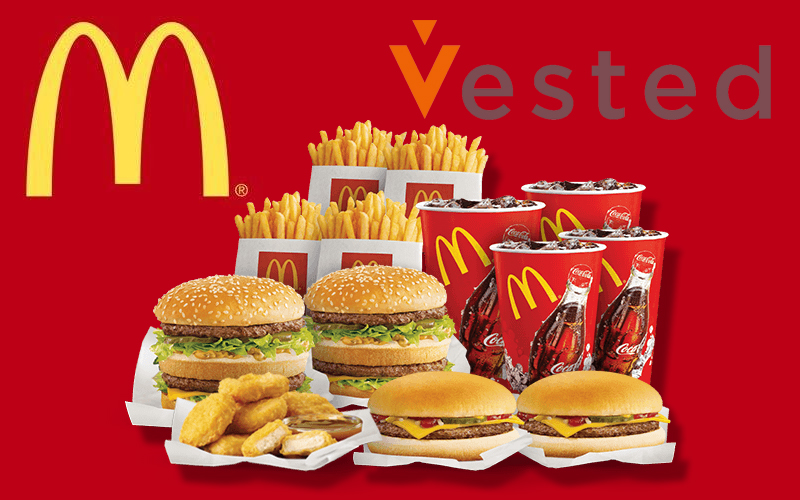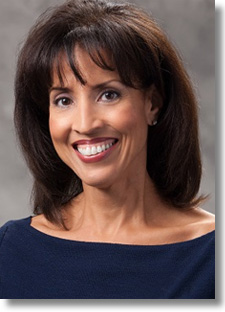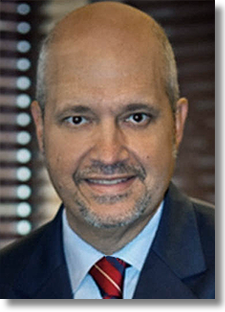McDonald’s “Secret Sauce” for Supply Chain Success

Is there a “secret sauce” for consistent supply chain success? McDonald’s, which is consistently ranked in the top echelon of supply chains by Gartner, thinks so, the fast food leader stays atop of the marketplace with a “system” where suppliers and McDonald’s “share the pie.” By Kate Vitasek
Gartner’s influential rankings of the top supply chains for 2016 once again has McDonald’s occupying the No. 2 spot.
In fact, the company has occupied the No. 2 slot since 2013 and has been entrenched in Gartner’s top 10 rankings since 2011.
So what is the secret sauce?
According to McDonald’s, it is creating long-term supply chain success based on a “System” where everyone wins.
University of Tennessee researchers studied McDonald’s System as part of its research into what is known as the Vested business model.
McDonald’s relationships with its suppliers embodies the Vested mindset of expanding the pie and sharing the pie.
Suppliers that help McDonald’s succeed also succeed by building their own businesses. Both McDonald’s and its suppliers create value rather than simply exchanging value, as in conventional transaction-based relationships.
The System
McDonald’s deep-seated culture for long-term, win-win relationships with suppliers dates back to McDonald’s inception, when founder Ray Kroc established a precedent of trust and loyalty with its business partners. Kroc’s “System” philosophy is often described as a three-legged stool. One of the legs is McDonald’s employees, a second leg is the owner/operators that run the restaurants and the third leg is McDonald’s supplier partners.
The stool is only as strong as all three legs. This means that franchisees, suppliers and company employees each support the weight of McDonald’s equally. Kroc believed that if the restaurant owner/operators and suppliers were successful, success would come to him as well. Simply put, McDonald’s, its owner/operators and their suppliers have a vested interest in helping each other succeed. Simply put, for one to prosper, each must prosper.
Kroc’s insistence on what UT researchers coined a “what’s in it for we” (WIIFWe) mindset has created the world’s most powerful restaurant supply chain. WIIFWe thinking is ingrained in the DNA of McDonald’s, its suppliers and its restaurant owner/operators. Kroc’s System has stood the test of time because leaders within the System have continued to honor a “System First” approach where solutions always include the question: “What’s best for the System?”
The results are staggering. The McDonald’s System has expanded to more than 100 countries and more than 35,000 restaurants serving more than 68 million customers a day. McDonald’s has also set the food industry standards for food quality, safety and assured supply. A USA Today article cited McDonald’s food as “safer than a school kid’s lunch,” with quality standards that are five to 10 times safer than state standards for school meals. The USDA has promoted McDonald’s as having the toughest food safety standards in the United States.
Simply put, customers know they will get the same consistent food and service from Arkansas to Alaska and from Argentina to Azerbaijan.
What is fascinating is that McDonald’s achieves success from a 100% outsourced supply chain. Kroc decided to use an outsourced model for his operating plan from the very inception of McDonald’s. The decision was simple. First, he didn’t have the funds to build his own vertical supply chain. But lack of funds wasn’t the only reason. As a salesman calling on other restaurant chains, he had seen many cases where companies forced their franchised restaurants to buy goods from the company.
The book, “Behind the Golden Arches,” relates the widespread practice: “Tastee-Freez sold freezers to its licensees. Dairy Queen took 45 cents out of every $1.40 gallon of mix. Chicken Delight required its franchisees to purchase its chicken cookers. General Equipment provided shake machines, broilers and most other kitchen equipment to its Burger Chef franchisees.” Having captive licensees as guaranteed buyers, franchisers needed to do little else than sit back and collect money.
Kroc despised the short term thinking that virtually all of his competitors used. For Kroc, success was determined over the long term. Kroc’s ultimate desired outcome was profitable, individual stores serving consistent, quality products. Finding suppliers who would be partners in the process was the key.
Kroc was determined to work with suppliers that had the same long-term thinking. This meant all three “legs of the stool,” owner/operators, suppliers and McDonald’s employees, must have “what’s best for the System?” as the primary consideration. Partnership and commitment to mutual goals are more important than the lowest pricing.
It is long-term thinking that actually drives suppliers to innovate. And innovation ultimately makes McDonald’s cost structure significantly better than the competition.
While Kroc set the tone over 50 years ago, his legacy remains.
To this day, “System First” has become shorthand for the long-term win-win behavior demonstrated by all three legs of the stool. The “System First” philosophy is institutionalized within McDonald’s and its suppliers, standing the test of time as new leaders, new suppliers and new restaurant owner/operators enter the System.
Marion Gross, senior vice president and chief supply chain officer, North America, cites the System as a huge competitive advantage for McDonald’s supply chain. “Our unique supply chain model is based on an exceptional set of operating principles that create long-term wealth and competitive advantage for everyone involved by mitigating costs, preventing safety issues, and producing quality and innovative products that delight customers in a uniquely McDonald’s way. The result is increased customer value, better brand health and stronger business performance.”
So what are these operating principles that have stood the test of the time? This is the question that UT researchers asked when they studied the McDonald’s System.
The result of the research, which included studying some of the world’s most successful supplier relationships from companies as diverse as McDonald’s, P&G, Microsoft and Water for People, was a codification of the Vested methodology that consists of five simple “rules.”
Playing By the Rules
Virtually all supplier relationships use conventional transaction-based solutions (supplier gets paid per unit, per hour, per mile, per pound).
Vested’s five rules flip the conventional approach on its head and creates a business model based on achieving long term business outcomes.
McDonald’s and its suppliers are in sync with the Vested’s five rules, leading McDonald’s and their suppliers to mutual success under the golden arches.
Rule 1: Focus on outcomes, not transactions
Rather than do RFPs chasing the best price, McDonald’s consciously makes a decision to create long term relationships with suppliers. The company works with existing supplier partners to drive business value and achieve McDonald’s key business outcomes.
Gross explains: “The System works because all parties build the relationships needed to infuse quality, safety and precision into the supply chain. McDonald’s deals with food, which is a very sensitive thing. The supplier takes on the accountability to meet McDonald’s exacting standards, which are believed to be the highest in the world. The restaurant is able to focus on customer service and not the back door. The System just works like it’s supposed to.”
The secret to making it work is the fact that McDonald’s and its most strategic suppliers have a deep commitment to each other to continually deliver value for McDonald’s System. Suppliers are confident the McDonald’s business is not vulnerable to competitors’ price-cutting and arbitrary change. And McDonald’s is confident – and validates – that its suppliers are delivering the best possible value and looking out after McDonald’s interests to protect and grow the System.
Pete Richter, president, Global McDonald’s Business Unit for Cargill and chair of the McDonald’s United States Supplier Advisory Council, explains how a long-term relationship founded on high degrees of trust has affected how Cargill interacts with McDonald’s.
“The trust and confidence in the future means we shift a majority of our resources to driving innovation, quality, supply chain optimization and investing in future growth initiatives. This takes trust on both sides of the table, but once you establish, it creates amazing leverage vs. the traditional arm’s length RFP type approach.”
Rule 2: Focus on the what, not the how
One of the key ingredients of Kroc’s secret sauce was to know McDonald’s core competency versus his suppliers. Kroc had the vision, but he knew he needed to rely on the suppliers and restaurant owner/operators for implementation. When it came to suppliers, Kroc – and later Fred Turner – took the lead with the standards for its famed QSC&V (Quality, Service, Cleanliness & Value) approach, and, at the same time, entrusting the suppliers to use their brainpower to determine “how” to best meet McDonald’s exacting standards.
Suppliers consistently report that while McDonald’s is very much aware of its supply chain partners, it does not micromanage them. One supplier summed up the McDonald’s approach as liberating: “McDonald’s is very supportive in setting the tone for all of the suppliers to work better to make the McDonald’s System better. McDonald’s lives and breathes to help its suppliers be successful. It seems simple, it’s easy to talk about… but hard to do.”
Because McDonald’s does not prescribe the “how” – it frees up suppliers to consistently challenge better, faster and cheaper ways to deliver against McDonald’s desired outcomes. Innovations to reduce costs, improve service or even create new products for the menu are commonplace among McDonald’s suppliers. Says a supplier: “McDonald’s relies on us to constantly question how we can do things better for the System.” And, this means looking for ways to lower costs structures that create a competitive advantage for McDonald’s.
Rule 3: Agree on clearly defined and measurable outcomes
Business is dynamic. What was on Kroc’s list of original desired outcomes are not on the list today. This is why McDonald’s seeks to align its strategy with its suppliers by sharing key supply chain priorities that drive value for McDonald’s System and ultimately the customers eating at McDonald’s.
To McDonald’s, suppliers are part of the planning and execution of the strategic plan. Suppliers refer to this as “having a seat at the table.” This enables suppliers to have essential buy in, where suppliers align their individual supply chain operations to the McDonald’s Plan priorities. As a key leg in the three-legged stool, suppliers know they are a critical part of making the System work.
McDonald’s Plan is a strategic blueprint that helps all parties in the System focus on the core drivers of McDonald’s business. The objective is to keep the McDonald’s brand relevant and meet the evolving needs of consumers in a dynamic business environment.
Today, the customer-focused Plan concentrates on being better, not just bigger. It provides a common framework for global business while it still allows for local adaptation. Sanchez adds a supplier’s perspective: “In today’s environment, sustainability and cost reductions are very important to McDonald’s.”
In fact, sustainability of McDonald’s supply chain has become a top priority. A good example of joint development initiatives is how McDonald’s works with nongovernmental organizations (NGOs) and suppliers on sustainability of its fish supply. Marion Gross provides the big picture: “We have worked on sustainable fisheries for 15 years. Fish is a unique product as it is all sourced from oceans.
Currently, the Marine Stewardship Council, the global leader for robust and scientific standards of all seafood eco-labeling programs, provides certification as to sustainable fishing. McDonald’s – working with existing suppliers – worked to lead the industry with the NGO. The results? The Sustainable Fish Standards that are still in place today. Because McDonald’s suppliers helped created the standards, they have buy-in for achieving them resulting in 100% certified sustainable fish.”
McDonald’s and its suppliers use a Supplier Performance Index, a key lever to continuously improve performance. Typically, the SPI covers six categories: Management, System First, Assured Supply, Quality Systems, Innovation and Predictable Competitive Pricing.
Gross explains the power of the SPI: “The SPI leads to insight, calibration and alignment and enables benchmarking. While the SPI yields a score for all of our suppliers, the scores are secondary to the conversation that ensues and the actions established to improve. The SPI allows us to be in synch with priorities and allows us to measure what matters.”
Rule 4: Pricing model/incentives for cost/service trade-offs
A key tenet of how McDonald’s thinks about pricing models is to ensure members of the system secure a profitable, long-term financial picture – one that keeps both McDonald’s and the individual companies successful by focusing on securing stable futures for all.
It is McDonald’s commitment and long-term view that makes suppliers comfortable about not fighting over a penny when they know there is likely a nickel in the future. It is in neither McDonald’s nor the supplier’s best interest to focus on the lowest price or the natural short-term fluctuations in the market.
Individual supplier pricing models (known as pricing protocols) reflect the concept of the three-legged stool. The pricing protocols themselves are highly transparent in nature and contain the variables to help all parties understand the business. The goal is optimization of the System. The protocols are developed to help show trade-offs on the total costs.
For example, a supplier might do something to save a penny up front that results in finished goods costing more based on location and transportation. The goal of the McDonald’s pricing protocols is to reduce the total cost – not the price. It is a transparent approach that works with suppliers to dig into the overall cost structures while preserving supplier margins.
Another McDonald’s goal is to ensure price stability for the restaurants. Frequent changes to menu price result in owner/operator worry about the price of beef or profit pressure. For this reason, McDonald’s and suppliers usually revise pricing protocols every one-to-three years based on the category and the region.
When pricing is revisited, it is not done in the conventional vicious cycle of bid and deal renegotiation. Suppliers don’t worry about the security of their business or profitably, but rather spend their energy aligning pricing protocols that provide a competitive advantage for the System and remain fair for all three legs of the stool.
Rule 5: Govern for insight, not oversight
McDonald’s governance philosophy for working with its suppliers is some of the best UT researchers have seen. McDonald’s shared the highlights of their governance approach in the book, “Vested: How P&G, McDonald’s and Microsoft are Redefining Winning in Business Relationships,” in great detail.
Highlights of governance mechanisms start with using what UT researchers call a “two in a box” approach, which establishes a peer-to-peer relationship between each supplier and McDonald’s for each level of governance – from operational to executive. The peer-to-peer alignment is a proactive approach to managing business.
One of the primary benefits of establishing two in a box relationships is that it drives accountability – personal accountability. As one of McDonald’s suppliers put it: “It’s not just business, it’s personal.”
Ed Sanchez, CEO of Lopez Foods, explains how it works: “The best part of McDonald’s governance is the deep peer-to-peer relationships. Work takes place seamlessly on the peer-to-peer basis where problems are solved at the lowest level possible. If we have a problem – they get it.
You don’t have to educate McDonald’s people on the problem – instead our McDonald’s counterparts are there to help us. But a key is they don’t micromanage us.” Sanchez says: “For a different client, we were short one truck the other day and the issue came all the way up to me. At McDonald’s, it would never get to me. The right levels would just be on it and it would be fixed. I’d never hear about a short truck.”
In addition, formal “Supplier Summits” are held annually in the United States and every two years in other regions. All McDonald’s suppliers receive invitations. With 400 to 600 people filling the room, suppliers hear from McDonald’s top leaders including the CEO and COO, regional presidents and menu management.
Francesca DeBiase senior vice president, and global chief supply chain and sustainability officer explains: “The purpose is to give suppliers a really well-rounded understanding of where McDonald’s is going. This meeting is extremely important.”
An essential aspect of the Supplier Summits is the Awards dinner and presentations. About 15 to 30 awards are presented, depending on the area of the world. Award categories include such titles as “System First,” “Sustainability” and “Innovation.”
The crowning event is the coveted “Supplier of the Year Award.” DeBiase continues: “It’s a huge deal. The supplier who wins gets a visit from our entire senior management team, along with a festive party for the people who work on our account. These are really motivating.”
But governance is not just about personal relationships. It also includes formal mechanisms to ensure a proper “rhythm of the business.” McDonald’s initiates communication through multiple tools that provide 360-degree feedback in both formal and informal settings.
These include monthly metrics reports, quarterly business reviews, site visits, ad hoc and social gatherings, formal and informal supplier events and the SPI dashboards.
Suppliers also have a meaningful voice through Product Category Councils, comprised of suppliers in key sourcing commodities, plus representatives from the customers that are represented by owner/operators association and McDonald’s corporation.
The objective is to establish an open culture that openly discusses and debates important issues and, ultimately, makes decisions based on “System First” thinking aimed at how to best achieve the Strategic Plan.
This sometimes means that an individual stakeholder does not “win.” Rather, the decision is the best long-term decision to optimize total costs across the entire supply chain and system.
Download the Case Study: McDonald’s Secret Sauce for Supply Chain Success
A System Built For Success
When you look back at McDonald’s success, the results are impressive – and not only for its supply chain. This year, Fortune ranked McDonald’s the No. 2 Most Admired food services company with high attribute rankings in key categories, including global competitiveness; financial soundness; people management; social responsibility; quality of management; and innovation.
Yet, when Ray Kroc set out to create the System based on long-term win-win business relationships, many thought he was crazy. In his book, “Behind the Golden Arches,” he wrote: “The basis for our entire business is that we are ethical, truthful, and dependable. It takes time to build a reputation. We are business people with a solid, permanent, constructive ethical program that will be in style…years from now even more than it is today.”
Sixty-one years later, that remains the case. McDonald’s, its owner/operators and their suppliers have indeed created a System to be reckoned with – one that continues to set records and sit near the top of Gartner’s supply chain rankings year after year.
But ask anyone at McDonald’s and they will tell you they could not do it alone. The trust in the System that closely follows the Vested five rules inspires collaboration that consistently drives process and product innovations on a regular basis. Gross explains: “Our long term win-win approach to working with suppliers allows suppliers to feel comfortable investing in innovations that creates value for all parties in the System.”
Suppliers agree that trust in McDonald’s win-win System earns not only the hearts and minds of suppliers, but also benefits their wallets, as they make investments in time and capital to help grow the System. Suppliers refer to the level of trust, transparency and collaboration as “unparalleled” – not only between McDonald’s and the supplier – but also between suppliers.
Suppliers openly share product and process breakthroughs because they have come to believe that what is good for the System is good for the supplier. For example, it was two suppliers working collaboratively that perfected the Chicken McNugget. And one supplier created a patent that doubled beef patty production and shared the patent with competitors to benefit the entire McDonald’s System.
What’s more, every supplier in the UT research put McDonald’s at the top of their list of best clients. For example, Cargill Master Chef Stephen Giunta proposed to transfer to the McDonald’s account full-time. A classically trained chef from the world’s finest cooking schools, he could work just about anywhere he wants. He chooses to spend his time working with McDonald’s.
His motive for asking to be staffed on the McDonald’s account full time was simple. “With McDonald’s, I get to work with best of the best in the industry – the best minds of McDonald’s, Cargill and competitors. It’s the ‘A Team.’ I’m competitive and I love the challenge of developing food for millions of customer every day,” he said.
Vested is all about creating relationships that create win-win relationships and for McDonald’s three-legged stool, it is win-win-win that brings out the best in suppliers like Giunta and Cargill. It is the reason UT researchers are convinced that McDonald’s will continue to thrive for years to come.
Note: The McDonald’s story is described in detail in the book “Vested: How P&G, McDonald’s and Microsoft are Redefining Winning in Business Relationships.”
About the Author: Kate Vitasek is the author of six books on her “Vested business model” for highly collaborative relationships and a faculty member for the University of Tennessee’s Graduate and Executive Education program.










